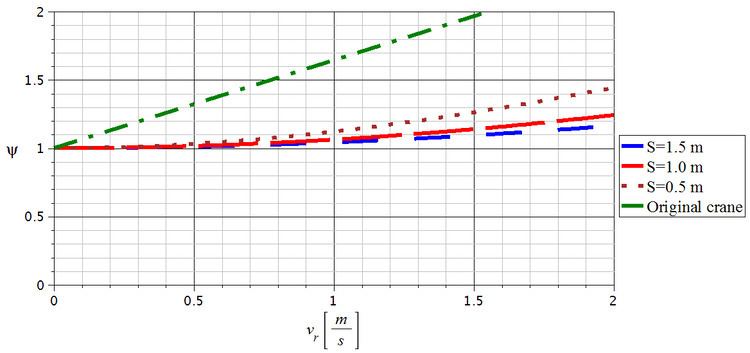 | ||
An offshore crane shock absorber is a gas spring with hydraulic damping used to reduce dynamic loads during offshore lifting. The lifting capacity of the offshore crane can be increased significantly during lifting in high sea states if a shock absorber is fitted.
Contents
Crane design load
Offshore lifting capacity is governed by classification society rules. The fundamental rule is that the design load should not be exceeded. The design load is given by:
Where:
The classification societies require that
Dynamic load
To calculate the dynamic load the classification societies use energy equations. The kinetic energy of the load is expressed as:
Where:
Energy absorbed by the crane is given by:
Where:
The pring force is given by:
Combining the two previous equations yields an alternative description of the energy stored in the crane structure:
During an offshore lift the crane does not start to absorb energy from the load before the force in the crane wire exceeds the static weight of the load, which means that we can write the energy absorption of the crane as:
Setting
And solving for
The dynamic factor will always be larger than 1 because there will always be a velocity difference between the crane hook and the load during offshore lifts. The value of
Where:
Adding this to the energy balance yields:
Again solving for ψ:
The plot to the right shows the effect of the shock absorber stroke length.
Estimating relative velocity
The relative velocity is defined by several classification societies as:
Where:
The crane tip velocity,
These estimations are conservative and for large ships/rigs they may deviate significantly from reality. A plot of the dynamic factor versus significant wave height for a crane mounted on a semisubmersible and lifting from supply boat is shown above to the right.
